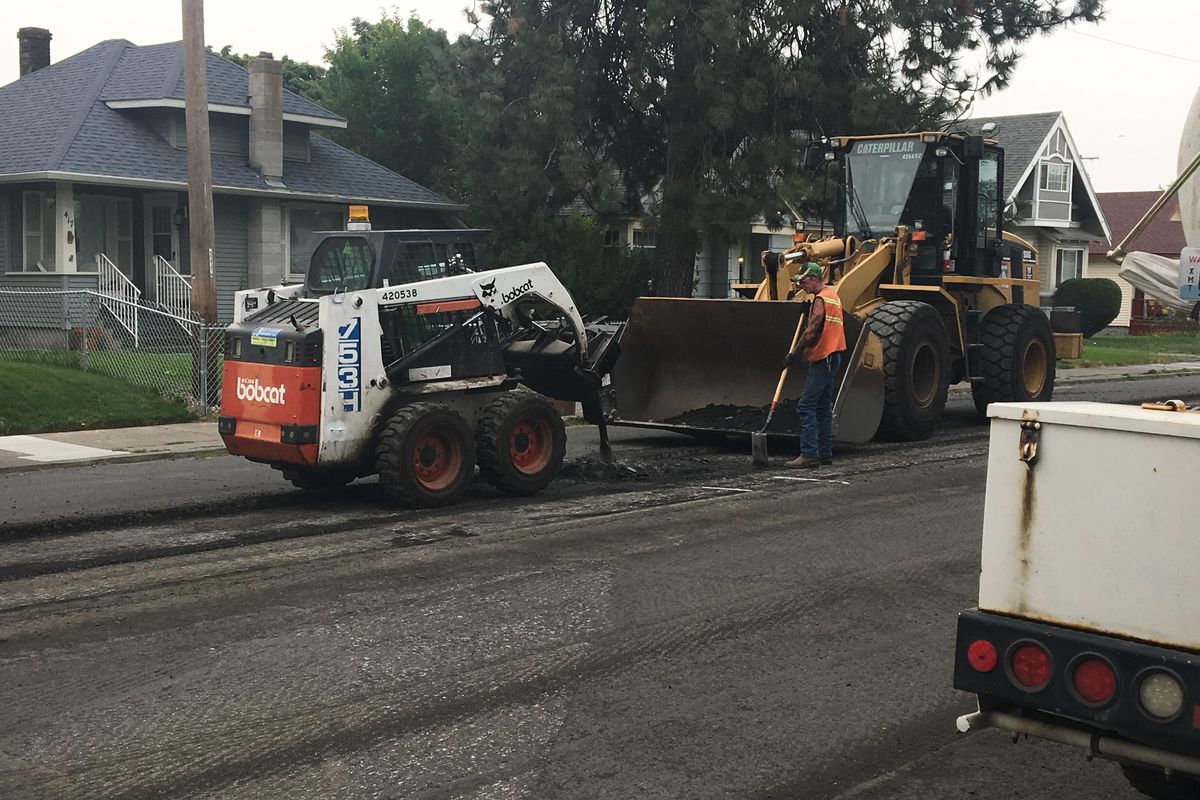Spokane gets extra $5 million to rebuild roads over the next two years

Carol Miller welcomed the Spokane street crews that descended on Garland Avenue outside her front door last week with handshakes of joy.
“This is exciting. This is like Christmas in August,” Miller said Monday morning as she watered her garden, and jackhammers pulverized asphalt that will be smoothed as part of the final project in an emergency $1 million rehabilitation of streets made craggy by this winter’s extreme weather.
Mayor David Condon announced Monday the city will smooth over an additional 14.49 miles of road in 2018 and 2019 after receiving $5 million in federal grants. The city will use about $2 million out of the money raised by a 2014 voter-approved streets bond to help finance the work, the mayor said at a news conference in the Garland neighborhood, for a total cost of around $7 million.
“These projects will be completed by private sector contractors, so that means the work will be in addition to the maintenance projects our streets department already has plans for in these years,” Condon said.
The stretches of road slated for repair over the next two years are: Maple and Ash streets from Rowan Avenue to Country Homes Boulevard, Wellesley Avenue from Driscoll Boulevard to Milton Street, Nevada Street from Wellesley to Francis avenues, Mission Avenue from Greene Street to Trent Avenue and Sprague Avenue from Scott to Ivory streets.
The grant money was awarded for stretches of road that had been rebuilt using bonds from the previous street levy in 2004 and are in line for routine maintenance, said Scott Simmons, the city’s public works director.
“We likely already went in there and did upgrades,” Simmons said. Roads slated for grant money are all in northern sections of the city; another grant application that would have funded projects south of Interstate 90 wasn’t accepted in this round, Simmons told the City Council on Monday afternoon.
The Garland project is slated to continue for the next two weeks, Simmons said. Like the projects that will follow in 2018 and 2019, the Garland work is known as a grind and overlay, where a milling machine is used to break up the top, uneven pavement surface that is replaced with smooth asphalt after the underlying layer is cleaned and dried. That step usually follows crack and chip sealing, which are typically the first efforts in repaving damaged roads, Simmons said.
Garland was one of several thoroughfares left with gaping pockmarks after a historically wet, snowy and cold winter. Condon said as of Monday, the city has filled 4,099 potholes this year, and citizens can continue to report them to the city’s 311 hotline.
Larry Cieszewski, who’s lived in the Garland area for 22 years, said he’d been forced to exit Garland at B.A. Clark Park to avoid the potholes when returning home this summer.
“I am so glad that road is being fixed,” Cieszewski said Monday, watching the trucks continue grinding up the asphalt near his home.
Josh Scott, who owns Time Bomb Collectibles at the corner of Garland and Howard Street, said the work that began last week hasn’t slowed his business.
“I’m actually kind of happy. It’s been bad like that for a few years now,” said Scott, who moved his business to the Garland district from Monroe Street a few years ago.
The Garland work will stretch east of Division Street, a highway maintained by the Department of Transportation. Simmons said the city will coordinate with state officials on that work.
In his remarks, Condon pointed out the city’s acquisition of two additional pothole trailers, doubling Spokane’s response to damaged streets. They should arrive in early September, the mayor said.